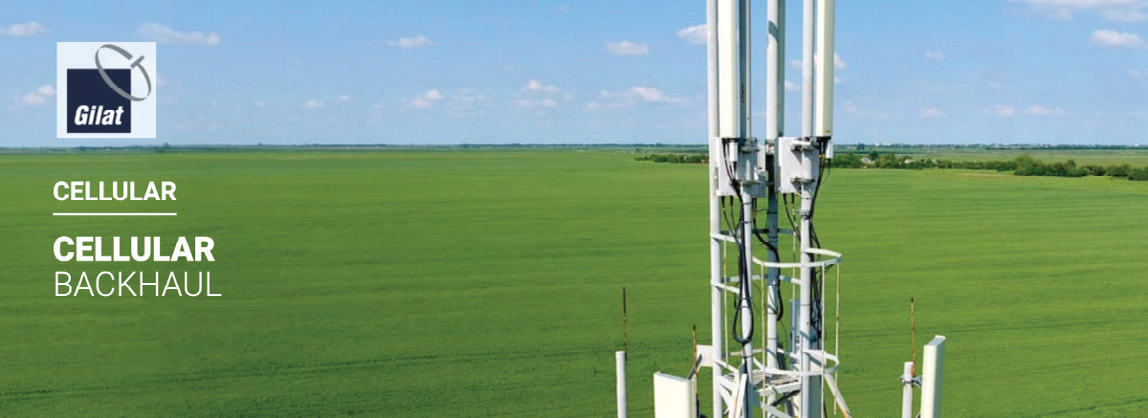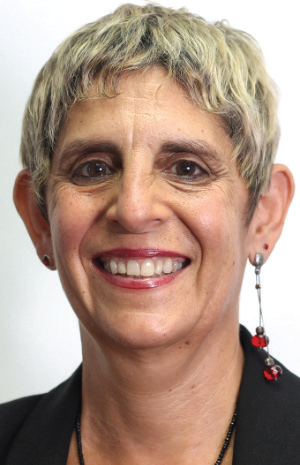The market for satellite-based cellular backhaul (CBH) is growing in an unprecedented manner. While the reasons are many, the COVID-19 pandemic has certainly brought to the forefront the compelling need for ubiquitous connectivity around the world. The last 2+ years have shown the urgency of providing communication services to everyone, including remote and rural communities that have, until now, lived with insufficient or even no access to communication.

How big is this problem? Billions worth. Even today, almost half of the Earth’s inhabitants do not have access to the Internet. This means that about 3.7 billion people are still offline. Most of these people live in developing countries and most of them are women. For the lucky ones, the wealth of information made available today through cellular backhaul connectivity was once unimaginable. From finance to education to real-time crop management…access to information has been proven to improve quality of life. And the simplicity of using a cellphone also means connectivity is made more affordable and convenient — and more importantly – accessible.
Key Growth Drivers Of Cellular Backhaul Over Satellite
There are 5 key trends which are driving the increased use of satellite for cellular backhaul.
1. Awareness: Increasing governmental and social awareness of the global digital divide and the need to close it, regardless of location or geographic terrain.
2. Government Mandates: We are seeing an increase in government mandates for Universal Service Obligation or USO. A recent UN report cautions that the digital divide will become the new face of inequality. The UN has also included an effort to bridge the digital divide as part of their Sustainable Development Goals.
3. Increasing Demand: Demand for internet connectivity increased exponentially during the pandemic, allowing those of us reading now to have the ability to continue working, socializing and learning. As a direct result of restrictions caused by Covid-19, China saw a 30% increase in the number of hours per device spent on mobile data usage. In Italy the figure was 11%. And it’s not just internet access that has seen these increases. The use of voice services has also increased considerably, as people strive to keep in touch with loved ones and friends during the periods of lockdown that have been enforced around the world. In the U.S., Verizon reports that the average number of daily voice calls is currently more than double the number of calls made on Mothers’ Day, normally one of the busiest days of the year. There has also been an increase in the use of broadband data so people can see each other and not just hear each other: think Zoom for both business and pleasure. In the US during the 1st quarter of 2020, at the start of the pandemic, average broadband consumption rose by 47%.
4. Climate Change: Climate change is causing more natural disasters, such as floods, hurricanes, wildfires, earthquakes, and tsunamis. These events often render terrestrial infrastructure non-functional and mobile networks go down. Unfortunately, this happens exactly when communication is needed the most to secure adequate emergency response and organize life-saving missions. We are also seeing increased need in major cities to rely on satellite backhauling as a BACKUP system when the terrestrial network collapses.
5. 5G: Satellite is an integral part of delivering the promises of 5G. This is because satellite technology has the scale and scope to provide ubiquitous connectivity. We are also seeing IoT applications grow as 5G begins to roll out that call for connecting billions of devices everywhere.
It is clearer than ever that connectivity is critical to everyone, everywhere, anytime. Satellite backhauling of cellular networks not only extends reach to the most remote regions, but also provides reliable, continuous communication when terrestrial connectivity is not available.
Shattering Myths
In the past, CBH over satellite was often used only as a solution for hard-to-reach rural and remote areas such as islands, mountains, and deserts, where terrestrial infrastructure such as fiber, next-generation copper, or microwave was either too expensive or unfeasible. However, today more and more MNOs are adopting satellite backhauling to easily extend connectivity to rural sites and integrates seamlessly with their terrestrial networks, as they are looking for a reliable solution which can provide enhanced Quality of Service (QoS) and Quality of Experience (QoE). In addition, we are seeing the increased use of satellite communication in cases of disaster recovery and emergency response when terrestrial lines are not working or just not available. Using satellite communication guarantees that governments and businesses can continue to operate their global communications systems and first responders have a reliable means to coordinate life-saving operations.
The economics as well as the ability to overcome technical challenges have brought LTE satellite backhauling to the forefront not only in the developing world but also in more established markets. There are, however, several myths surrounding the use satellite backhauling that are ’fake news”:
Myth #1: Performance requirements cannot be met with satellite backhaul — With the large amounts of required data communication, MNOs raise concerns that VSATs are not able to deliver the required LTE performance to the handset and will not be able to support the high throughput required for 5G network architecture. In addition, as satellite communication has an inherent delay, a concern is raised that this will result in poor backhaul performance and consequentially a poor user experience.
Reality: Acceleration technology and high-performance modems mitigate latency effects — The inherent satellite delay can be mitigated by using acceleration technology that addresses latency effects. This makes it possible to achieve high throughput which requires high performance modems to accommodate the traffic and provide the required high-quality user-experience. Such a solution is especially critical when high bandwidth is required, like in 4G/5G deployments. Gilat’s solution is based on patented technology and high performance VSATs that provide the required user experience.
Myth #2: Satellite Connectivity is Expensive — In the past, the cost of satellite bandwidth capacity often caused satellite-based communications to be prohibitively expensive for providers of broadband services and MNOs.
Reality: Satellite Capacity Pricing at Times Rivals Terrestrial Bandwidth Costs — With the continued launch of High Throughput Satellites (HTS) and Very HTS (VHTS) satellites, as well as NGSO constellations, we are seeing a further decline in bandwidth prices due to the abundance of satellite capacity, propelling satellite solutions into the mainstream. Based on these trends, it is expected that the cost for satellite backhaul networks will compete with those of terrestrial backhaul networks for many use cases, particularly when the Total Cost of Ownership is considered.
Myth #3: Satellite Connectivity is Too Complex — A third common misperception is that satellite technology is too complex to implement. MNOs already have their hands full with their rapidly evolving mobile networks, and the last thing they want is added complexity for backhaul
Reality: Complexity can be mitigated in a number of ways
A: Accelerated Layer-2 Support Facilitates Satellite Network Integration — A factor contributing to satellite backhaul complexity relates to the OSI network layer, at which the integration of the satellite and terrestrial cellular networks takes place. Satellite networks traditionally operate at Layer-3 (network layer) to be able to accelerate the user data, while MNO networks in some cases operate at Layer-2 (data link layer). Gilat’s solution has the advantage of supporting accelerated data while operating at a carrier-grade Layer-2, thus easing MNOs satellite integration while extending traditional terrestrial networks.
B: Global Network Management Reduces Complexity — Another way to reduce satellite backhaul complexity is to use a sophisticated global network management system (NMS). Gilat’s TotalNMS enables full provisioning, configuration, control and monitoring of all satellite hub elements, as well as remote terminals, regardless of their physical location. This is crucial for streamlining management, allowing MNOs to easily and cost-effectively scale to support any network size, enabling them to start small and add sites as needed.
C: Managed Service Reduces Costs — Significant savings in cost can be achieved by regarding satellite backhaul as a managed service. The MNO specifies the requirements, the SLA and key performance indicators, as well as the required site locations and the schedule. Considering the managed service as a black box and giving end-to-end responsibility to Gilat, enables the MNO to focus on their core competency and promote their business.
With strong growth drivers and dispelled myths, it is no wonder that satellite backhauling is now mainstream. In fact, satellite backhauling is an important element of MNO operations and is no longer a niche play. As proof, when world economies slowed down during the first year of the pandemic and the SATCOM industry took a hit, satellite backhauling stayed relatively strong, due to the uncompromising need to bridge the digital divide.
CBH From Gilat
Cellular backhaul has, in recent years, been identified as one of the fastest-growing satellite application sectors, prompting satellite operators and service providers everywhere to expand their awareness and capabilities in these areas.
Not only does satellite enable connecting remote locations, it strengthens the resiliency of communications networks, and directly contributes to saving lives. Gilat has proven its superior satellite backhauling technology worldwide and is diligently at work for next generation solutions to meet the challenges still ahead. For more information, please visit this direct Gilat infolink...

Doreet Oren has been with Gilat since 2012 and is responsible for defining product positioning, solution messaging, go-to-market strategies, market research, and analyst relations. Ms.Oren has over 20 years of industry experience, and has held management positions in R&D, Product Management, Product Marketing and Solution Marketing for international high-tech companies. In this capacity Ms. Oren contributed to product and solution definitions and was responsible for delivering the company’s vision to the media and analyst community. Oren has published thought leadership articles in renowned international journals and has spoken at numerous industry conferences worldwide. Oren received a BSc in Computer Science from George Washington University and graduated from the Modern Marketing Program at the Recanati Graduate School of Business Administration, Tel Aviv University.



